I recently took the opportunity to attend the Midlands Parks Forum Annual Conference at the Midlands Arts Centre (MAC) in Cannon Hill, Park Birmingham.
Cannon Hill Park is one of Birmingham’s premier Parks. It’s a park I remember fondly, having worked there as a propagator in the 1980s and as a member of the decorating team who had the opportunity to work at the Chelsea Flower Show. I am proud of the impressive record Birmingham City Council have with well over thirty Chelsea Gold medals for their floral decorations exhibited at the show during the last forty years.
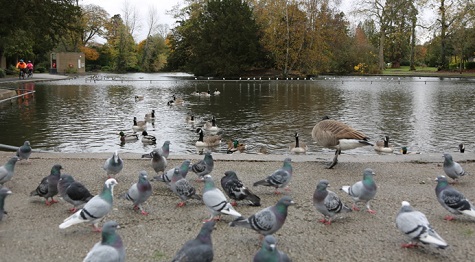
Cannon Hill Park
The park was originally donated to the citizens of Birmingham by Louisa Ryland. Cannon Hill Park was opened to visitors in 1873, and was designed by TJ Gibson, who also designed Battersea Park in London. Louisa Ryland hoped the park would help the people of Birmingham enjoy their recreation and keep healthy, a legacy that is still going strong.
The park itself includes 80 acres of formal parks, as well as 120 acres of conservation and woodland. It’s a brilliant place to enjoy a walk, run or cycle, or just to sit and relax. There’s also a natural amphitheatre with a beautiful, listed bandstand at its centre.
The day’s conference attracted over 100 delegates representing over 60 different local authorities and organisations that included Green Flag, RSPB, Historic England and National Trust. The conference was sponsored by ProLudic, a designer of play and sports areas.
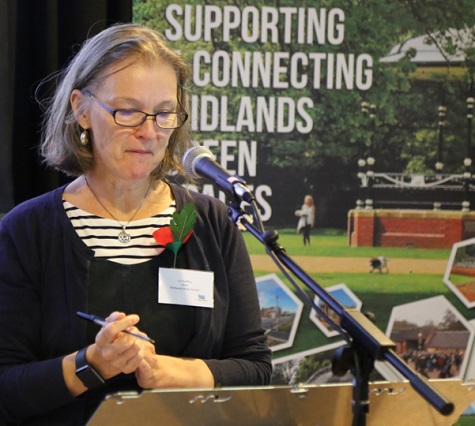
Liz Suffins, chair of MPF
We were welcomed by the Chair of the Midlands Parks Forum, Liz Stuffins and Cllr Majid Mahmood, Cabinet member for the Environment, Birmingham City Council. The voice of parks in the Midlands - Home - Midlands Parks Forum
The conference offered a fantastic programme of speakers, beginning with a presentation by Clare Warburton, principal advisor for green infrastructure at Natural England. She began by saying how the recent pandemic had shown how important nature is to our health and wellbeing, but also how many people do not have access to high quality green spaces close to home.
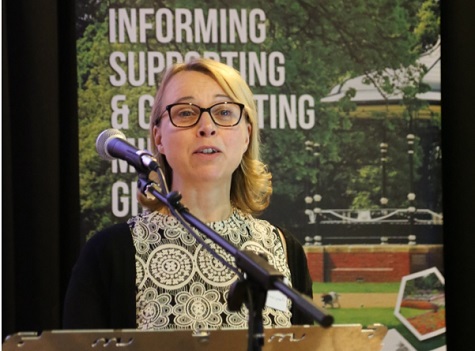
Clare Warburton
And with that in mind she then went on to clarify the importance of the recently published Environment Act 2021 and the role of the Green Infrastructure Framework that is being promoted by Natural England that will be the catalyst for change in the way local authorities can promote the true value of our green and public open spaces.
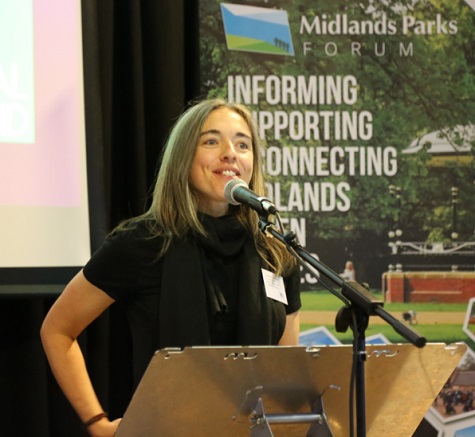
Dr Nicola Dempsey
Next up was Dr Nicola Dempsey senior lecturer / director of Graduate Research at Sheffield University, who gave a fascinating talk on place keeping.
Place-keeping refers to the long-term management of public and private open spaces, from around Europe and the rest of the world. There has long been a focus in urban landscape planning and urban design on the creation of high-quality public spaces, or place-making. This is supported by a growing body of research which shows how high-quality public spaces are economically and socially beneficial for local communities and contribute positively to residents’ quality of life and wellbeing.

She gave several examples of the merits of this work along with mentioning one of the most controversial ones that involved the poor communication by the council regarding the felling of hundreds of street trees in Sheffield in 2020.
However, the key message was something the industry has been concerned about for many years, the fact that finding capitol monies to build a new facility is the easy bit – it’s generally finding the money for ongoing maintenance that becomes the biggest problem.
Most partnerships focus on place-making – the creating, the regenerating, the physical changes to a place. But what happens afterwards? Who maintains and manages the place once it’s ‘finished’? Who looks after it for the long term? Do partnerships stay interested? Too often, places fall into disrepair through neglect and poor management because place-keeping doesn’t happen. Place-keeping activities fall into two broad categories. FACILITATING place-keeping (campaigning, awareness raising, developing green space strategies) and DELIVERING place-keeping (ongoing maintenance, organising events, fundraising). Partnerships that work well have a shared vision, clear objectives and share resources.
Next up was Nick Grayson, Green City manager at Birmingham City Council; part-time Senior Research Fellow at University of Birmingham, and Advisor to the Future Parks Accelerator - ‘Naturally Birmingham’
Birmingham is one of several Biophilic Cities that acknowledges the importance of daily contact with nature as an element of a meaningful urban life, as well as the ethical responsibility that cities must conserve global nature as shared habitat for non-human life and people.
Nick gave us an update on the work Birmingham were doing to bring about a cultural change in the way the council manages its urban landscape with the aim of different departments coming together to deliver the new required services to improve the life and experiences of all those who live and work in Birmingham.
The Birmingham Future Parks Standard then aims to ensure that each site in council ownership would reach the entry level requirement for Green Flag with each criteria gaining 4 points or above.
With over 600 such sites in Birmingham, the City of Nature Plan, allows for a 25-year timeframe; but clearly starting with those in greatest need. For this solution to work it requires the council to recognise an integrated solution; namely that the parks service alone, will not be responsible for delivering all the proposed activities or engagements. This is where and how the Birmingham Fair Standard represents a change-model and not just a bolt-on audit tool.
For me, one of the most interesting presentations was given by Sean Flecher, chief officer Leeds City Council, who I have known for many years. Back in the early 1990s when I was parks manager for Telford & Wrekin Council, I used to travel up to Leeds to buy our annual bedding plants from Leeds Council Nursery, that at the time was being managed by Sean.
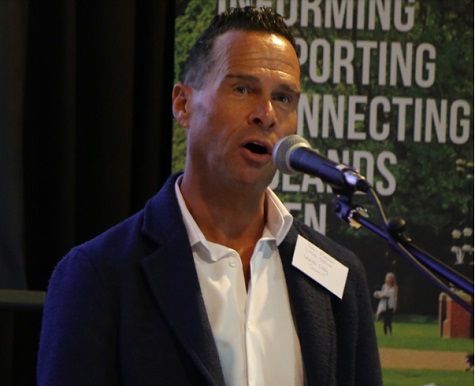
Sean Flesher, chief officer Leeds City Council
Over the years I have seen Sean’s career prosper and develop into the successful role he now holds as chief officer. He transformed the fortunes of the council when he came up with the idea of improving the income generation ilof some of their prime open space assets.
In 2010/ 11 the Council’s Parks and Countryside department had trading figures of gross expenditure of £28 million, income of £14 million and net costs of £14 million. Compare that to the most recent 2022/23 figures of gross expenditure £36 million, income £28 million and net cost £8 million - a tremendous improvement in what the council are now earning from their own assets. Over the years they have built on the success of these financial models and are continuing to invest in the potential of their public open spaces.
Three of their most popular sites are:
The final speaker of the morning was Sarah Allen, education and engagement officer for Historic Coventry Trust, who gave an insight into their work.

Leeds Council, workshop
After a fine lunch we then had the opportunity to attend some afternoon workshops, led by some of the morning speakers that allowed attendees to find out more about the topics covered in the morning sessions.

Q&A panel
The day was rounded off by a Q&A session with a panel of speakers responding to questions from the audience. All in all, it was an informative day with plenty of opportunity for networking for those attending the conference. A big thank you to Liz Stuffins and her team for putting on a splendid conference.
There were many positives I heard during the day in relation to how local authorities are changing their mindset to the current issues and problems they have been facing for decades. It is indeed a time for a revolution in how we manage these unique and priceless landscape assets of ours.
Now is the moment for all local authority departments to start working together even more closely to achieve these new initiatives and hopefully secure the adequate funding to fulfil the needs and expectations of their communities in the years to come.